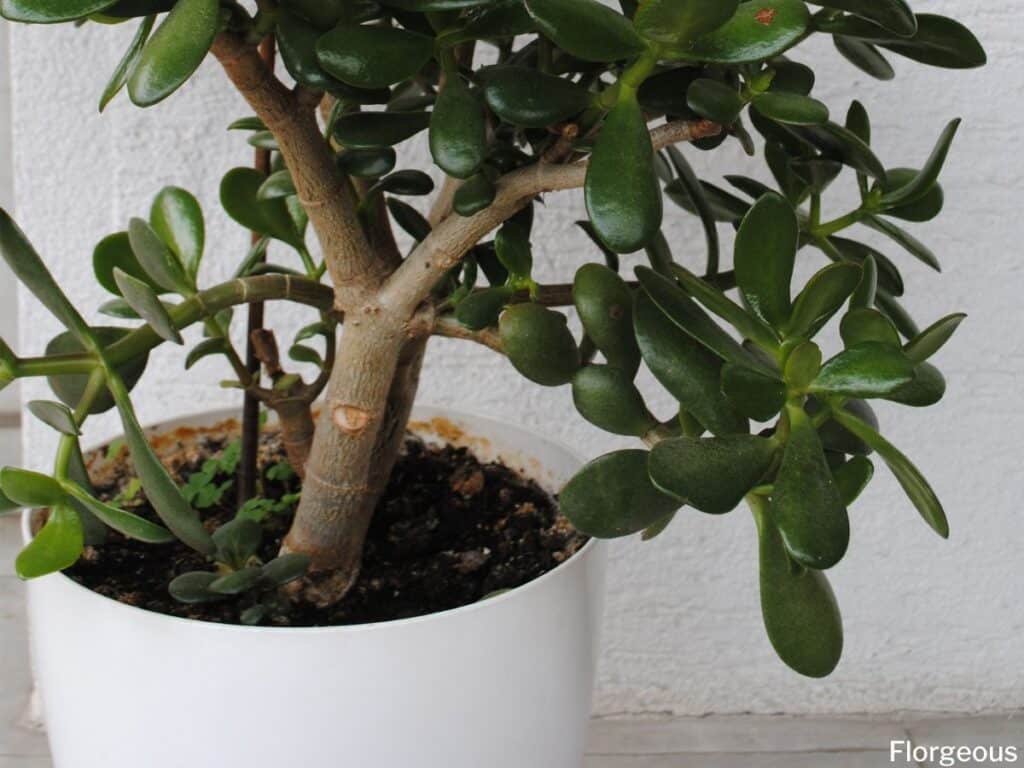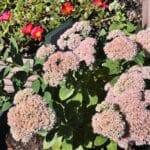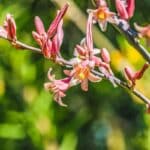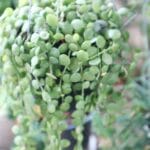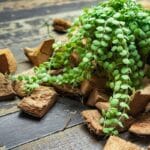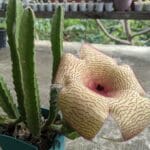Crassula ovata commonly known as the Jade plant makes an excellent houseplant. Thanks to its thick stem and fleshy oval-shaped leaves it makes gardening more fun and stress-free.
Typical of many succulents, the Jade plant grows slowly about 1-2 inches per year. But records show that it can reach a maximum height of 3 to 6 feet tall especially if given a bit of care. It is native to South Africa and Mozambique in East Africa.
If you are the type of person who loves giving plants as a gift, you may want to consider wrapping a Jade plant nicely because it symbolizes friendship, luck, and prosperity in Asian culture. However, homeowners should be wary of where they will put the plant inside their houses because it can be toxic to pets.
Many bonsai artists also use the plant as a subject of their work because of its low-maintenance, tree-like appearance, and tolerance to drought conditions. A jade bonsai tree can also thrive in both outdoor and indoor conditions.
How to Choose The Best Soil for Jade Plants?
Jade plants that are well-taken care of can live over a hundred years and can be passed down to generations. That’s how hardy this plant is! But if you find yourself struggling in growing jade plants, probably you are using the wrong potting mix.
Most problems in growing a Jade plant are due to water stress. The plant is either suffering from lack of moisture or overwatering. And every water issue is also a soil issue. In the case of container-grown plants, the potting soil is the only space that provides moisture to live.
Jade plants live in environments where they only receive a few volumes of water year-round. To thrive in this harsh condition, they store water inside their woody stems and fleshy leaves.
Jade plants tend to cover their whole body with wax to prevent the escape of stored water from their system. Thus, the water requirement of succulents cannot be treated the same as other houseplants or they will easily rot.
These succulent plants need well-draining potting soil that mimics the soil type of their native environment. They hate being watered all the time and will benefit by allowing the soil to dry between waterings.
Most garden stores have an available potting mix ideal for cactus and succulents. These mixes are also preferred by potted Jade plants.
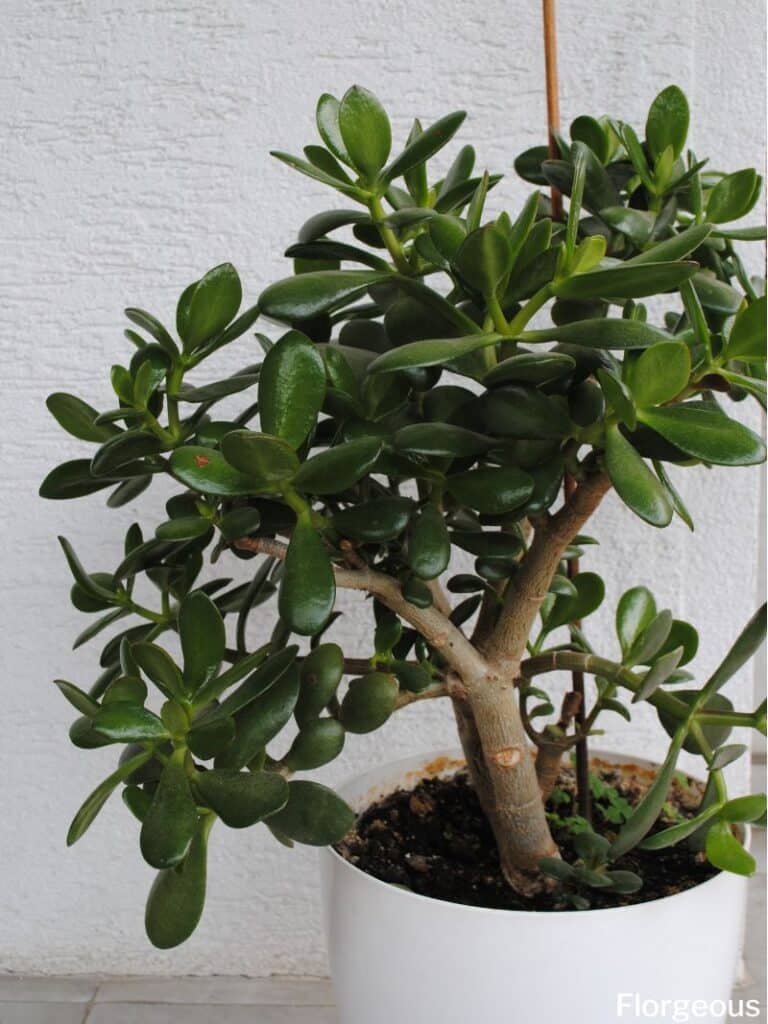
How to Make Potting Soil for Jade Plant
Some people do not like buying pre-made mixes because they simply enjoy the process of making their own mix. If you are one of them and you have ample time, below is a simple guide to help you create one.
Potting soil used for cacti and succulents has a pH level of slightly acidic to neutral (5.8 – 7.0) and is composed mainly of coarse and gritty materials. Such materials have a role to prevent the accumulation of water in the growing medium.
The ingredients used in making Jade plant potting mix can vary from anything organic to mineral matter such as:
Perlite
An airy material that counteracts soil compaction and provides both drainage and aeration to the potting soil. It is also porous, and able to hold a small amount of moisture and nutrients. It often rises to the soil surface during irrigation because of its lightweight nature. Do not forget to wear a mask because perlite dust can wound the lungs if inhaled.
Pumice
Pumice provides properties similar to perlite. It prevents compacted soil while improving drainage and aeration. In return, plant roots grow healthier and happier. It is also heavier so it stays exactly where it is in the soil during watering.
Coarse Sand
It is a very gritty substance that is made from crushed granite or quartz. It serves one purpose which is to improve the drainage of the potting soil. A potting soil that has poor drainage is easily saturated with water and deprives plant roots of oxygen which causes root rot in most cases. Do not confuse coarse sand with play box sand or beach sand because they do exactly the opposite when mixed with potting soil.
Pine Bark
Pine bark is made from byproducts of milled wood. It helps create a lightweight and airy mix that improves aeration while holding a little amount of water and nutrients. It decomposes slowly which is ideal for slow-growing plants.
Coco Coir
Coco coir is produced from the byproduct of the coconut processing industry. It can absorb moisture several times its weight and can hold nutrients for the plants. It is almost pH neutral and said to have antimicrobial properties against different plant pests.
A succulent mix will have different concentrations of the components depending on the plant type as well as personal preference.
The general rule is it must always have more inorganic minerals than organic materials. It is like cooking the same dish but different in terms of how others will like a spicier taste or a sweeter one.
For beginners, a good starting ratio for a healthy jade plant is 2 parts of any mineral matter either solely or in combination plus 1 part of organic materials such as pine bark or coco coir.
The small percentage of the organic materials is important to hold an adequate amount of water and nutrients that are still needed by the plant to survive. You can also mix commercially sold general potting soil with perlite at a 2:1 ratio respectively.
When and How to Repot Jade Plants
Due to the slow growth rate and shallow roots of the Jade plant, frequent repotting is not much of a concern. Younger Jade plants can be repotted once every 2 to 3 years while the older ones can wait up to 4 to 5 years before repotting. Early spring is the best season to repot a houseplant, especially if you’re dealing with a mature plant.
Below are some practical steps to repot a Jade plant:
- Select a new and clean container. The size must be a little larger than the previous one. Terracotta pots are good options because they can wick excess water away from the potting soil.
- Gently pull the plant out of the container. You can turn the pot upside down so it can freely slip with the help of gravity.
- Examine the roots. Remove any black or dead roots to eliminate the risk of spreading diseases. Use sharp scissors to make a clean cut so that the wounds can heal more quickly.
- Carefully tease out the roots and remove any traces of old soil as much as you can. Do not force the removal of the old soil to the extent of damaging the roots in the process.
- Depending on how vigorous the roots are, you can slightly trim it to encourage more growth. But if you are not confident, you can skip this step.
- Fill the new container about ⅓ of its height with fresh potting soil for Jade plants. Spread the potting soil evenly inside the pot.
- Place the plant inside the container. It must be deep enough so the soil can steadily hold the plant in place. Make sure that the leaves will not touch the surface once the container is filled with the potting soil.
- Fill the empty spaces with the remaining Jade plant soil. Use your hands to spread it evenly.
- Do not water yet your newly repotted Jade plant for at least two weeks or more to allow healing of the wounds and the formation of new roots. Wait for at least one month before you fertilize to prevent root burn. Once settled in, you can see the growth of new leaves.
- Water and fertilize as needed. With tender love and care, your jade plant can be the charm and luck of your household that can be passed onto the next generation.
FAQs
What type of soil is best for a jade plant?
The best soil for a jade plant is a well-draining, sandy or loamy soil mix. A commercial cactus or succulent potting mix works well, or you can create your own mix with equal parts of potting soil, perlite, and coarse sand.
Is cocopeat good for jade plant?
Yes, cocopeat can be a good component in soil mixes for jade plants as it helps retain moisture while providing good drainage. However, it’s essential to mix cocopeat with other ingredients like perlite or sand to ensure adequate drainage, as jade plants are susceptible to root rot in overly wet conditions.
Can I plant jade in regular potting soil?
Yes, Jade plants can be planted in regular potting soil, but it’s crucial to amend the soil to improve drainage. Mix regular potting soil with perlite, sand, or gravel to ensure adequate aeration and drainage, as jade plants are susceptible to root rot in waterlogged soil.
Do jade plants like coffee grounds?
Yes, coffee grounds can be used as a component of compost or soil amendment for some plants, but they are not typically necessary or beneficial for jade plants. Excessive use of coffee grounds can alter soil pH and may lead to nutrient imbalances or other issues. It’s best to use a well-balanced fertilizer formulated specifically for succulents or cacti to provide the nutrients jade plants need.
Up next: Overwatered Jade Plant: Signs, Solutions & Preventive Care

